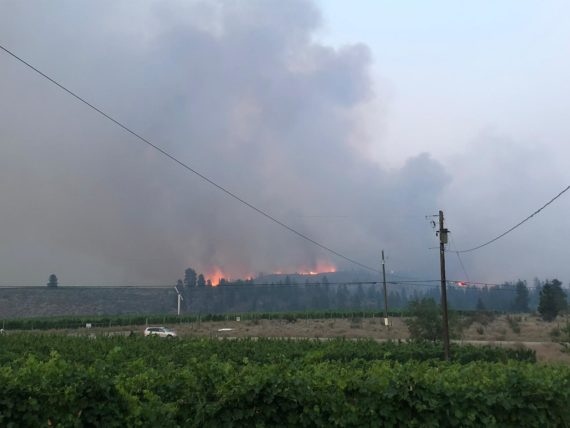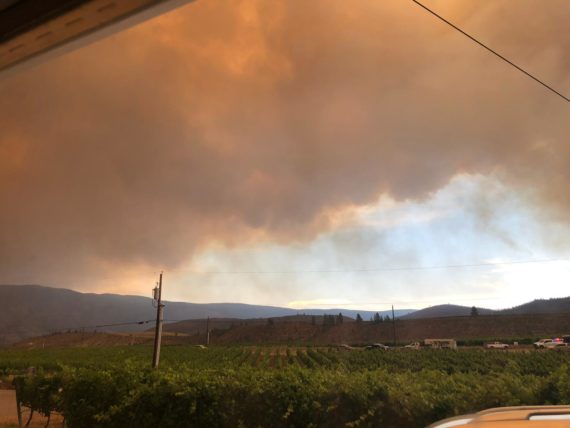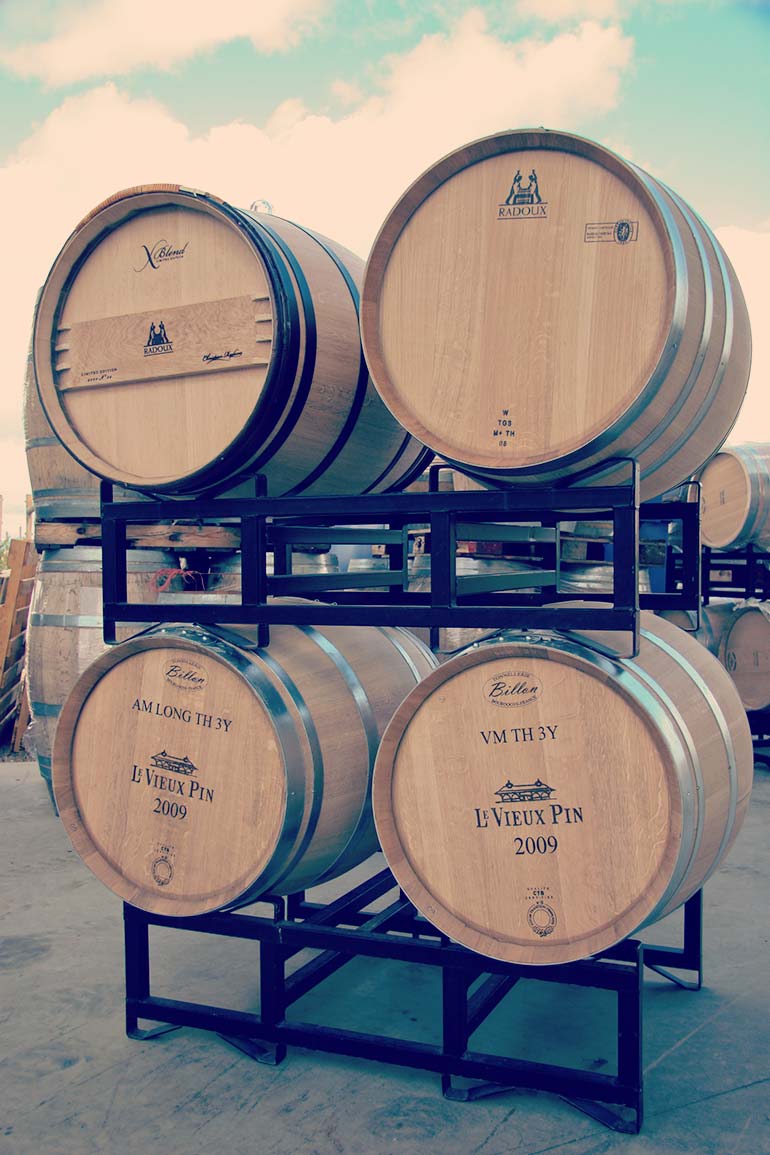March 2023 | General, Okanagan, Wine Education
Forest Fires and Smoke Taint
Smoke and its influence on wine has become a trending topic, in the Okanagan Valley, and around the world as forest fires become more and more prevalent. We have made some notes on the research being done here in the Okanagan and abroad to help you understand the not-so-basic way that smoke taint occurs, and to share our own philosophies regarding our vintage-specific experiences.
Direct smoke on the grapes themselves is the main contributor to the smoke taint we perceive. Conversely, smoke on the vine leaves is not considered a major way the smoke taint enters the plant or grape clusters.
The grapes are most vulnerable to smoke taint when they are green, and during veraison. They are less impacted once they are fully developed, near the end of ripening. Further, faint smoke in the atmosphere doesn’t cause taint, whereas fires near by the vineyards do. In other words, like hail, smoke taint is very localized and can affect two vineyards relatively close to each other differently.
Further, the grape skins hold 50% of the volatile phenols. Longer macerations and skin contact transfer the smoke taint from the skin to the juice. This is why smoke taint can be less noticeable or not noticeable at all in white wines and rosé compared to reds.
There are ways to measure the volatile phenol levels in the vineyard with handheld devices. These measurements contribute to research and understanding of the impact of smoke on grapes and wines.
To us, smoke taint is described by the terms ashy, smoky, burnt, and sometimes medicinal, which can be on the nose and linger on the palate. This smoke taint is made of measurable volatile phenols (glycosides), primarily guaiacol and cresol.
Guaiacol is a key indicator of smoke taint and accumulates in grapes in a bound form. Smoke taint occurs when these bound molecules are unbonded and released.
Low levels of guaiacol contribute to aromas associated with new barrel-aged complexity.
Guaiacol compounds and the effects of the wine aged in a barrel increase the appreciable smoke taint in wine.
We have noticed that perceivable smoke taint appeared and disappeared as the bonds change throughout the fermenting and ageing processes, in a fluid and artistically unpredictable nature. To confuse matters again, this may disappear with further ageing! For example, some of our 2015 vintages that initially showed more noticeable but still well below acceptable levels of smoke, are virtually not showing any signs of smoke now that 8 years have gone by. We believe this is due to the unstable nature of the bonds. Further complexity is added with the interplay between smell and taste, as the enzymes in your mouth break down glycosides within the wine, vaporizing the aromas as you taste. The wine may smell fine but the taste could be smoky.
In our experience, there have been 2 main years where smoke has been part of the terroir of the vintage, 2015 and most recently 2021. We’ve noticed some smoky flavours in specific vineyard sites where we grow Cabernet Franc and Syrah. We believe this is due to the proximity of the vineyard site to local fires in those specific years. We also notice there is a pre-disposition that Syrah and Cabernet Franc have to express smoke taint. Cabernet Franc and Syrah have within them some of the smoky phenols mentioned above.
What we do know from these smoky vintages is that you can open a bottle one day and experience the smoky flavours and you can open the same wine again weeks or months later and it won’t show smoky characteristics unless you are working hard to find that note! It is our modern smoke roulette.
We strive to make wines that are representative of the growing season. Highlighting the uniqueness of the site and using a low input winemaking process to create transparent wines that express the site and the year most importantly. Thankfully everything we’ve tasted from 2021 shows the purity and the character of the site as opposed to an overbearing influence of smoke upon the wine. In only one of the vineyards that we work with smoke is part of that year’s terroir in Syrah and Cabernet Franc.
Will you experience smoky characteristics in our wines? It depends. Everyone will experience the wines differently. Some people are more sensitive to smoky characteristics than others.
There is no guarantee that the smoky flavours will not appear again in the bottle later due to how these molecules become bonded and unbonded. Ways to remedy smoke-tainted wine fully is not readily available although some believe reverse osmosis can help but it also strips a wine’s complexity in the process. Plus, it opens a can of worms and takes one down the rabbit hole. We rather not go down that path.
In the name of building honest low intervention wine, we believe the overall quality of the 2021 wine is a compelling story that needs to be told. The wines show the character of the vineyard first and foremost and that is the reason why we decided to blend the wine as is. The smoky flavours will not be pervasive across all of our wines and as we’ve mentioned, some people may be more sensitive to perceiving smoke than others.
The 2 main wines from 2015 vintage we’ve experienced some smokiness are:
2015 Equinoxe Merlot
2015 Equinoxe Cabernet Franc
Both wines highlighted the uniqueness of the vineyard, La Feuille d’Or and the growing season first and foremost. The smoke was neither distracting from the fruit or the overall complexity of the wine. We are continually monitoring the development of these wines in the bottle as these wines age.
The two wines from 2021 you will experience some levels of smokiness will be:
2021 Syrah Cuvee Violette and lesser so in Syrah Cuvee Classique
The decision to release these wines comes from a lot of blending trails. Lots with excessive smoky notes were discarded. Other lots where the smoke note adds complexity and nuance to the wine are kept.
If you are noticing some smokiness in the wine, try decanting the wine aggressively to help the smoky molecules become unbonded and this can help dissipate that flavour. This will not remove all of the smoky flavours but can help bring out more of the complexity behind the smoke.
We hope this helps explain the knowledge we’ve acquired and our philosophies towards smoke taint. As always, our goal is to keep you updated as the science changes.
All The Best,
Your friends at Le Vieux Pin


